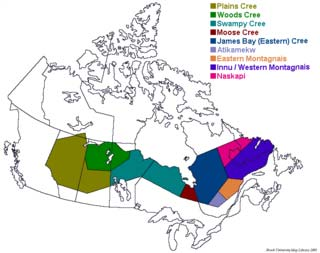Acid rain is a broad term that is often used to describe several forms of acid deposition. Wet deposition is when rain, snow, fog, or mist contains high amounts of sulfuric and nitric acid....
Algae
Aquifers
Arctic Haze
Arctic haze is a thin, persistent, brown haze that causes limited visibility on the horizons of what had been previously very clear arctic skies. It is most visible in the early spring and can be seen from northern Greenland, the arctic coasts of Canada and Alaska and occasionally in eastern Siberia....
Asbestos in Water and Asbestos Cement Water Pipes
There are dozens of municipalities across Canada that still use asbestos cement water pipes, servicing homes, businesses and schools. Regina, Saskatchewan has 600 kilometres of asbestos cement water pipes. “These pipes are experiencing more and more failures in recent years and account for almost all of the water main breaks in the city,” reads an NRC report on the matter. The report goes on to refer to asbestos fibres in water as a “health concern.”
Bacteria
Bottled Water
Campylobacter
Campylobacteriosis is an infectious disease caused by C. jejuni. It is also referred to as Campylobacter enteritis or gastroenteritis. Most cases of C. jejuni are sporadic (appearing singly or at widely scattered places) or involve small family groups, although some common-source outbreaks involving many people have been recorded. It is believed that consuming less than 500 cells can cause illness.
Canadian Prairie Drinking Water
Cholera
Cholera is an acute diarrheal illness caused by infection of the intestine with the bacteria Vibrio cholerae. Cholera was prevalent in the 1800s, but due to proper treatment of sewage and drinking water, has become rare in developed countries. V. cholerae can be found in contaminated food or water, especially in areas of poor sanitation and water treatment.
Cleaning Up After Pollution
Contaminants Regulated by the U.S. Environmental Protection Agency and their Health Effects
A water contaminant is a substance which is found in water that has the potential to pose a risk to public health at certain levels. Some contaminants occur naturally in the environment and seep into water sources through erosion. Unfortunately, many of the contaminants found in water are a result of human activities. The industrial wastes from factories, refineries, mines and mills all contain harmful substances which can contaminate water sources.
Conventional Water Treatment: Coagulation and Filtration
Many water treatment plants use a combination of coagulation, sedimentation, filtration and disinfection to provide clean, safe drinking water to the public. Worldwide, a combination of coagulation, sedimentation and filtration is the most widely applied water treatment technology, and has been used since the early 20th century.
Cost-Benefit Analysis: Treat the Illness or Treat the Water?
Coxsackie B Virus
The Coxsackie virus was first isolated in Coxsackie, New York in 1948. There are six different Coxsackie B viruses, each responsible for different symptoms and diseases. Coxsackie B viruses are responsible for numerous cases of central nervous system infections in infants and children, as well as heart muscle infections in both children and adults.
The Cree Language
Cryptosporidium
Cryptosporidiosis is a severe diarrheal disease caused by a microscopic parasite, Cryptosporidium parvum, abbreviated C. parvum. It (C. parvum) lives in the intestinal tracts of people and a wide variety of animals, and is transmitted when people or animals ingest food or water that it has contaminated. Cryptosporidium is a protozoan parasite.
Desalination
Many times, during presentations, students ask why we cannot simply desalinate the water from the ocean. After all, whenever you look at the globe, you can see that there is a lot of blue! Why are we being asked to conserve water when water covers about 71% of the Earth’s surface? Only 3% of the Earth’s water is fresh, and the majority of that is unavailable – it is either locked up in glaciers, in polar ice caps, in the atmosphere, or in the soil, or it is highly polluted or lies too far under the Earth’s surface to be extracted at an affordable cost. 97% of the Earth’s water is found in the oceans. If we could use ocean water to drink, then we would not have a water shortage, correct? Why can we not drink ocean water? There are desalination processes, so why can we not simply desalinate the ocean water if we cannot drink it?
Disease Causing Micro-organisms
How many times have we been told to wash our hands before sitting down at the supper table or after touching money and other dirty surfaces? By washing up we think that we’re clean and microorganism-free. We have baths, cook our food, treat our sewage and even cover our mouths when we cough and sneeze to prevent the spread of those tiny dirty particles that could make us sick.




















